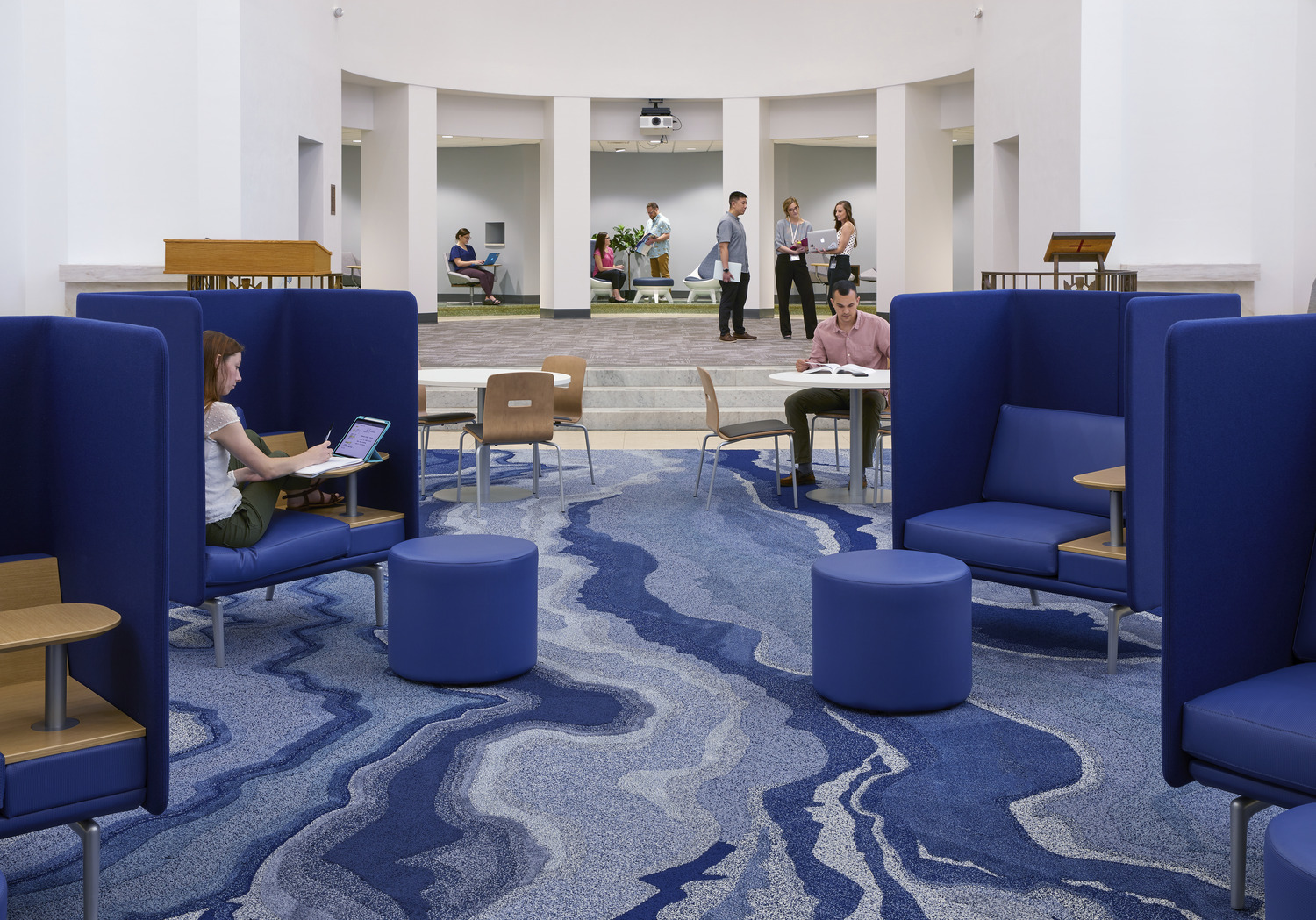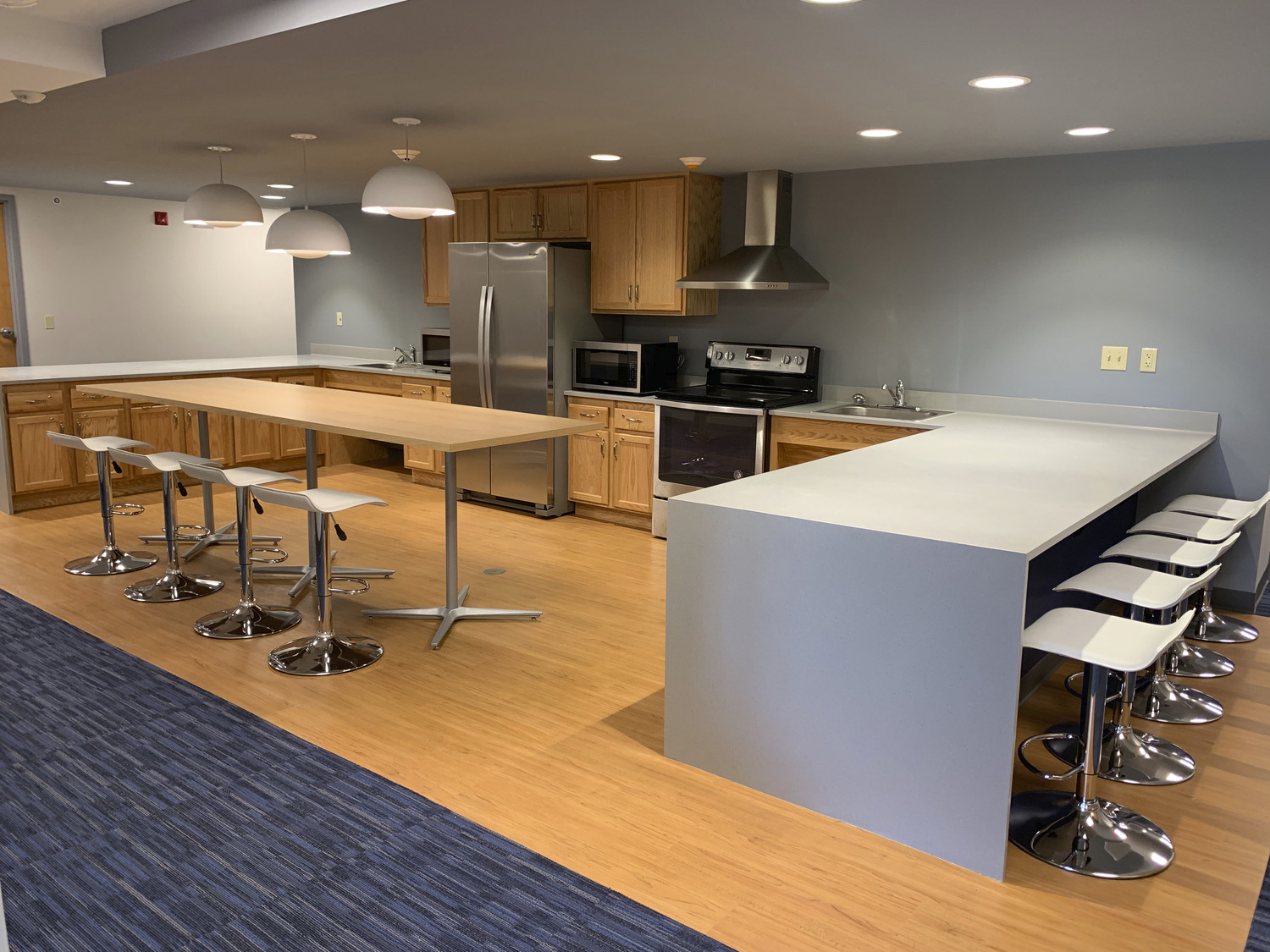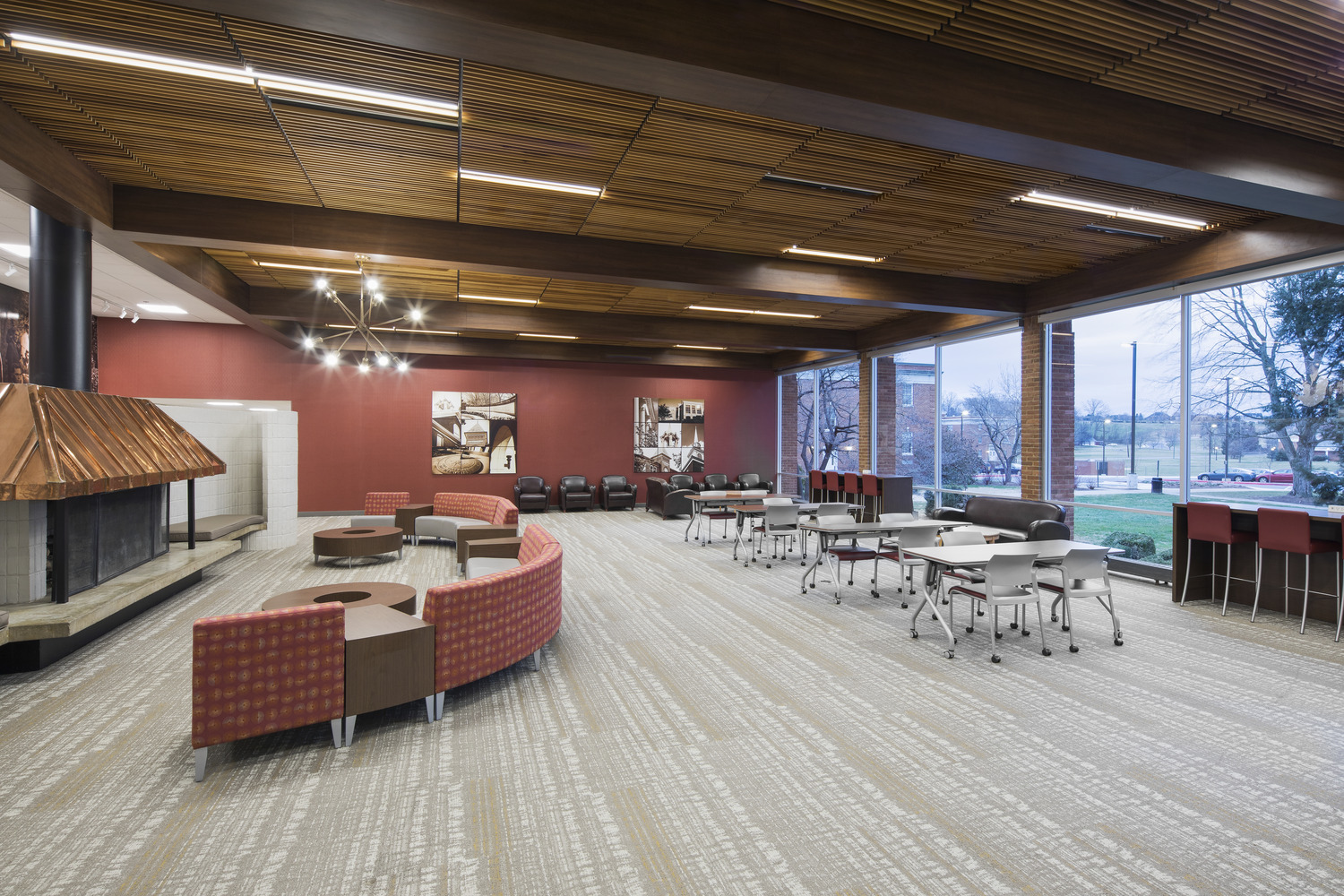Share This Story
Campus life is undergoing a dramatic transformation in today’s competitive higher education landscape. The utilitarian residence hall is a thing of the past as colleges and universities seek new ways to attract and retain students. Intentional housing design has become a key differentiator, repositioning residence halls as micro-societies that nurture greater academic success and personal growth.
By focusing on emerging trends related to wellness, sustainability and more, progressive institutions are creating spaces where students can not only live, but thrive.
1. Adding Mixed-Use Areas for Flexible Living
As student and administration needs evolve more rapidly, versatility is crucial. Establishing adaptable common spaces with modular furniture allows for quick transitions to suit different activities throughout the day. For instance, open-concept lounges can effortlessly shift from quiet study zones to event spaces, enhancing both functionality and engagement.
Colleges are also implementing a variety of residence unit types, from one- to four-bedroom options, giving students more choice with the agility to renovate as trends change.

2. Supporting Student Mobility with Tech-Equipped Spaces
With technology woven into the fabric of modern life, high-speed Wi-Fi is no longer a perk—it’s essential, ensuring seamless online studying across campus.
Additionally, as portable electronics unchain students from their desks, more are opting for common areas over their rooms. To support this trend, institutions can equip these spaces with plenty of printers, electrical outlets and charging stations, keeping residents connected and productive wherever they prefer to work.
3. Prioritizing Mental and Physical Health
The COVID-19 pandemic emphasized the critical importance of wellbeing in campus housing design as stress and anxiety surged. This urgency was further underscored in 2023, when U.S. Surgeon General Vivek Murthy declared an epidemic of loneliness, particularly among young people.
To help combat these challenges, layouts can incorporate natural elements like green walls, indoor plants and water features for calming ambiance. On-site fitness centers and yoga studios also support better physical health, while floor-to-ceiling windows bring the outdoors in to maximize daylight for more uplifting living spaces.
4. Building Stronger Student Communities
Because students are craving dynamic living environments, residence halls are turning into walkable, amenity-rich complexes that more closely resemble urban streetscapes. This provides a rich blend of social and recreational opportunities, fostering a deeper sense of belonging.
Outdoor areas like courtyards, fire pits and rooftop terraces serve as obvious gathering spots, uniting campus-goers with nature and each other. Inside, open-concept interiors inspired by upscale hotel lobbies cultivate a welcoming feel, where ample light and soft furnishings strike a balance between relaxation and meaningful conversation.

At Genesee Community College‘s Birch Hall, a centralized community kitchen—surrounded by single bedrooms—serve as communal “hearths,” encouraging students to cook, eat and socialize together.
5. Implementing Green Design Strategies
Sustainable design is vital for colleges and universities looking to reduce their carbon footprint and save money. Administrators can drive this shift by implementing new HVAC, plumbing and groundwater cooling systems; renewable materials; low-flow fixtures; and energy-saving appliances.
Green design practices ultimately benefit both the planet and the bottom line. For example, upgrading HVAC systems can improve air quality and yield approximately 20-40% energy savings, potentially recouping a $1 million investment in five to 10 years.
6. Elevating Student Privacy
While students seek a sense of community, privacy within bedrooms is also in high demand—a study by the National Multifamily Housing Council found that only 5% of student residences built since 2010 provide double occupancy. The challenge, however, lies in balancing discretion with opportunities for socialization.
To address this, layouts can include single-occupancy rooms or suites with shared living areas, giving students personal space while still enabling peer interaction. Moreover, communal bathrooms are often replaced with spa-like facilities that include separate stalls and showers.
7. Creating Live-Work Hubs
Locating academic spaces within or near residence halls is a powerful method for creating a cohesive living and learning atmosphere. This proximity strengthens collaboration among students with shared goals, enriching their overall experience.
Research labs and staff offices encourage spontaneous student-faculty interactions, and convenient seminar rooms and small lecture halls offer accessible facilities for evening study groups and workshops, empowering students to dive into curriculums beyond their usual classroom hours.

The renovated lounge at Bridgewater College’s Kline Campus Center is centrally located to support a myriad of student needs.
8. Shaping Design through Direct Feedback
Regardless of program priorities, the most successful housing design projects are those that actively involve students throughout the planning process. In this vein, more colleges are opting to gather input through focus groups and surveys to guarantee their living environments truly resonate with the campus community.
The Power of Place
Investing in housing is about much more than just providing a place to sleep—it’s about creating vibrant spaces that augment the college journey. Well-designed residence halls see students excel, graduate on time and leave a lasting, positive impact on their alma maters.
But the benefits extend beyond students. Universities that embrace these forward-thinking approaches boost retention and enrollment and position themselves as trailblazers in higher education. By reworking residence halls as true “homes away from home,” they offer a living experience that’s not just comfortable, but truly unforgettable.
